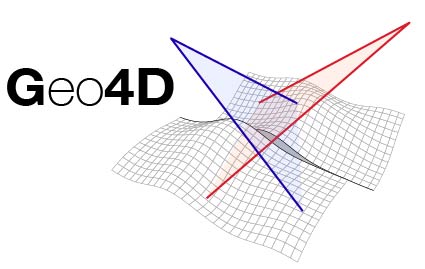4. Kalman Filter¶
4.1. Theory¶
See Dalaison & Jolivet, 2020 A Kalman Filter Time Series Analysis method for InSAR, Journal of Geophysical Research - Solid Earth, doi:10.1029/2019JB019150.
4.2. Implementation¶
4.2.1. Introduction¶
Below is the class computing the time series analysis pixel by pixel. Once the class is initialized, the main steps of the procedure are as follow:
First you start a new time series analysis (
start_new) OR you restart an existing one (restart_from_file)
- Then the function
kfloops over (new) timesteps and compute iteratively
the forecast (
predict)the analysis (
update)Finally the output for the given pixel is stored (
write_output)
4.2.2. Functions¶
- class kf.KF_class.Kalman(data, fctmod, j=0, i=0, verbose=True)[source]¶
Class for a Kalman filter for an InSAR time series analysis Initialize the object
- dataobject
observations/measurements in class from readimput_mpi.py
- fctmodobject
functional model in class from timefunction.py
- j,iintegers
indexes for 2-D image used for storage
- verboseboolean
print stuffs
- check_fit(X, P, eps_interf=10)[source]¶
Check quality of fit of phases if verbose activated. Compute residual weighted by its Covariance for analysed state and print warning if pb
- eps_interffloat
accepted difference between computed and real interferograms.
- create_H_R_and_D(k, indxs)[source]¶
Produce the measurement vector (D), the measurement matrix (H), and the measurement covariance matrix (R) at a specific timestep (0≤ k <N) –> if len(D)=n for this timestep, then H will be (n x (L+k+1)) and R (n x n)
- kinteger
itteration number
- indxinteger
indexes (with respect to t0) of phases in self.m[L:]
- create_Q(m_err, phi_err, add_err, M)[source]¶
Create process covariance Q from uncertainty on model (m_err) and interferograms (phi_err) at kth time.
- m_errfloat or an array of length L
model uncertainty
- phi_errfloat
systematic error on phases (should be zero)
- add_errfloat
systematic error on last forecast (square of std of mismodeling)
- Minteger
the state vector length
- detect_event(k, kmod, m_all)[source]¶
IN PROGRESS TESTED ON SYNTHETIC DATA Add model parameter for unexpected events not in model
- kinteger
iteration
- kmodinteger
minimum k at which modification can be applied
- expend_m_P(L, n, PL)[source]¶
Open state vector and covariance (m and P) to add building parameters
- Linteger
index at which we open and insert new parameters in m and P
- ninteger
number of parameters to add
- PLfloat
apriori variance of the new parameters
- get_model_from_num_of_param(N)[source]¶
Truncate model if the number of parameters in the input (N) is smaller than the maximum number of parameters as predicted by the initial functional model (self.Lref). N (or equivalently self.L) may increase with latter iterations
- innovation(Xf, Y)[source]¶
Compute residual or innovation vector Innovation for phases is not informative. After a few steps, reflects noise of data around model.
- kf(m_err, phi_err, add_err, t_sep=6, plots=True, cm='jet', ax1=0, ax2=0)[source]¶
Run kalman filter combining other functions of class (i.e. MAIN)
- m_errarray
systematic error on model (should be 0)
- phi_errfloat
systematic error on interferograms (should be 0)
- t_sepinteger
maximum time separation between interferograms, fix the minimum number of phases that must be kept in the state vector. Constrain the maximum length of the state vector
- plotsboolean, optional
WARNING - activate only if one instance of KF (=one pixel), then subsequent parameters must be specified
- ax1pyplot axis
in which plot evolution of parameters
- ax2pyplot axis
in which plot evolution of predicted value and model
- cmstring or colormap
the colormap of reference later discretised
- plot_params(k, ax, cmap)[source]¶
Plot each parameter over time with its uncertainty in subplots of size len(ax)
- predict(X, P, A, Q)[source]¶
Forecast step
- Xarray (N)
The mean state estimate of the previous step ( k −1).
- Parray (N, N)
The state covariance of previous step ( k −1).
- Aarray (N+1, N)
The transition matrix.
- Qarray (N+1, N+1)
The process noise covariance matrix.
- reduce_sizes_m_P(k)[source]¶
Remove phases in m if not used to build interferograms and has converged For ulterior long baseline interferograms, phase and associated standard deviation can be recovered but state Covariance terms are lost (too heavy to store)
- kinteger
number of iteration
- restart_from_file(fin, pasttime, indxs, dtmax=None)[source]¶
Extract initial condition from OPENED infile (fin) which stores previously computed mk and Pk for all pixels including pixel[i,j]
- finobject
opened H5 file containing formely computed state
- pasttimearray
already loaded time array in fin
- indxsarray
already loaded index array
- start_new(m0, P0)[source]¶
Start from skratches
- m01D array (N)
Initial Model. The length of the vector will determine how many element of the model will be kept (in the order given in the model vector)
- P02D array (N,N)
Initial Covariance
